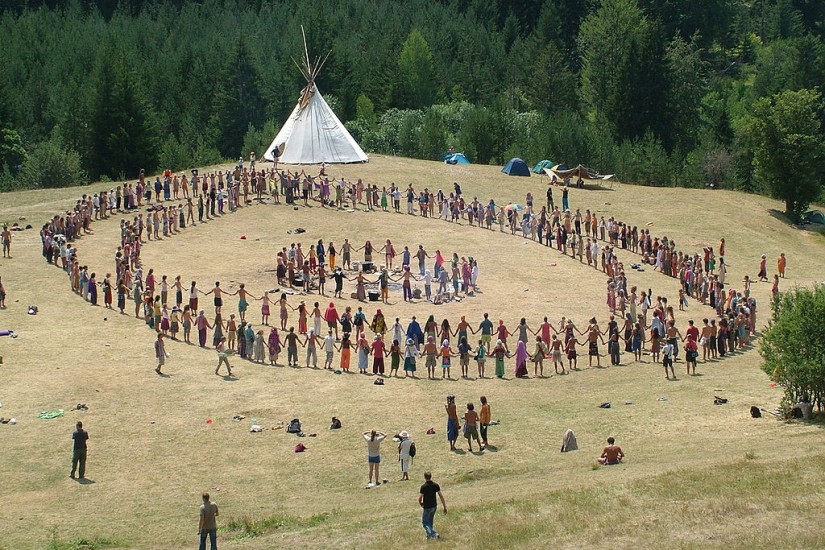It’s worth noting at the outset: New Age is not so much a discrete collection of beliefs as it is a Venn diagram (or a mandala, if you like) of intersecting interests, objectives and motifs. The New Age ‘movement’ is not a single movement at all. The term contains multitudes.
Arguably, the aspect of New Age that is easiest to pin down is also the most superficial: the look. The term conjures visions of chakra charts, indigo auras, psychedelic paintings of bodies radiating energy, crystals, candles, ambient music and dream catchers. One can guess with reasonable certainty that the crowd at a New Age gathering – a solstice ceremony in Golden Gate Park, say – will display a collective taste for dreadlocks, aromatherapy, South Asian or Andean textiles and accoutrements such as utility kilts, gnarled oaken staffs and coin pouches that wouldn’t look out of place at a Renaissance Fair. The aesthetic is one of unabashed pastiche.
So, too, are the beliefs undergirding it. Even scholars who have spent years studying the New Age movement disagree about what precisely it is. For the sociologist David J Hess of Vanderbilt University, ‘New Agers’ are religious seekers ‘who accept the paranormal in the context of a broader quest for spiritual knowledge’. The anthropologists Ruth Prince and the late David Riches of the University of St Andrews, who conducted a study of Neo-Druids at Glastonbury in the late 1990s, framed the New Age as a form of social organisation that recreates hunter-gatherer patterns of life and seeks ‘to rethink in terms of first principles the very nature of human society’. In 1994, Christoph Bochinger, now a professor of religion at the University of Bayreuth in Germany, wrote a monograph on the New Age movement, despite arguing that the term is in fact an ‘invention of the media’. Meanwhile, many in the natural sciences and the skeptic community use ‘New Agers’ indiscriminately as a blanket term for contemporary snake-oil salesmen who profit from a recent turn away from Western medicine.
I would argue that if there is one thread that binds together the various New Age movements, it is that they represent a resurgence of magical beliefs in a modern world supposedly stripped of them.
